For the last few years I’ve been pruning my young pines down to a single sacrifice branch. This slows growth but allows me to fit more trees on the bench.
Decandling time is a good time to do this work because it gives me the opportunity to slow down branches that are gaining too much vigor low on the trunk.
In general, I like keeping small branches on the lower trunk that I can use to build the future primary branches. If I let these branches grow freely, they’ll become too big to use in the final design.
By keeping this growth in check, I can have nice, small branches waiting for me when I need them.
Here’s a tree in its seventh growing season. I’ve already focused growth onto a single sacrifice branch, but I want to remove the lateral shoots that developed in spring so I can maintain a single line of growth.
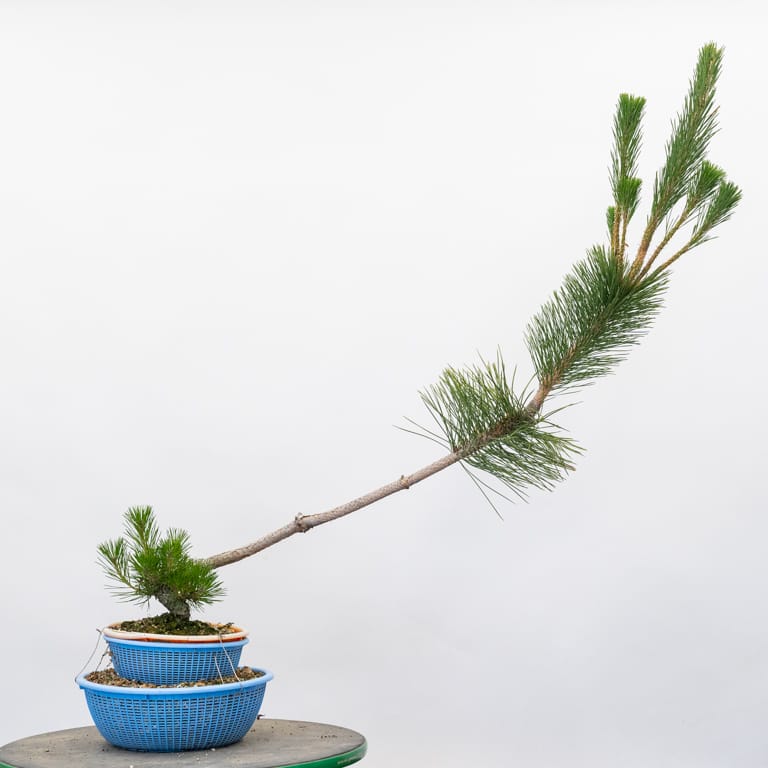
Young pine
I will also remove needles on the sacrifice branch as this can stimulate budding on the lower trunk and decandle the lower branches to keep them from getting too big.

After reducing spring growth
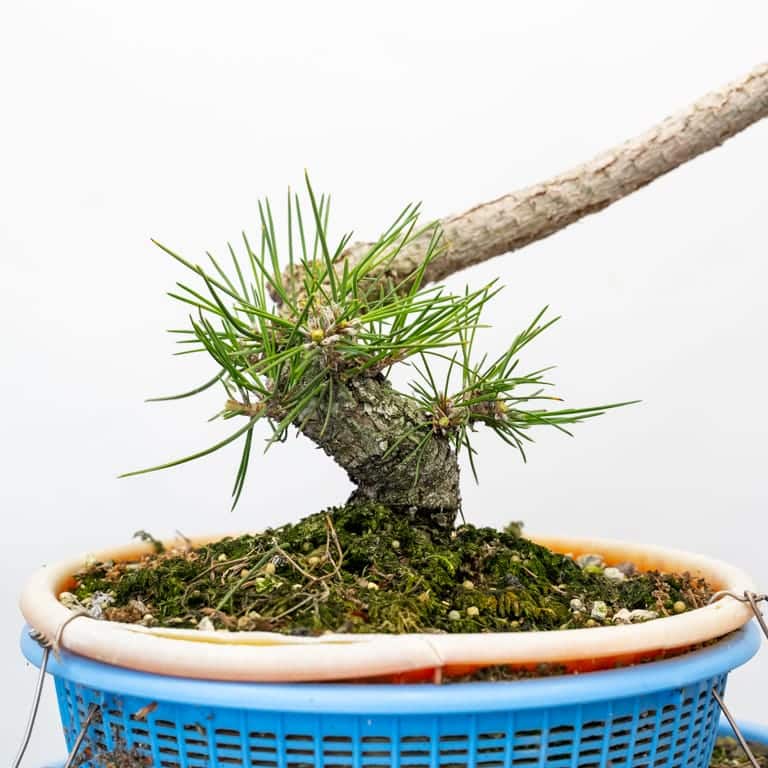
Close up of the decandled lower branches
Here’s another example. This tree is about eight years old. I removed the first sacrifice branch one or two years ago and am now letting a second sacrifice branch develop to create taper on the upper portion of the trunk.
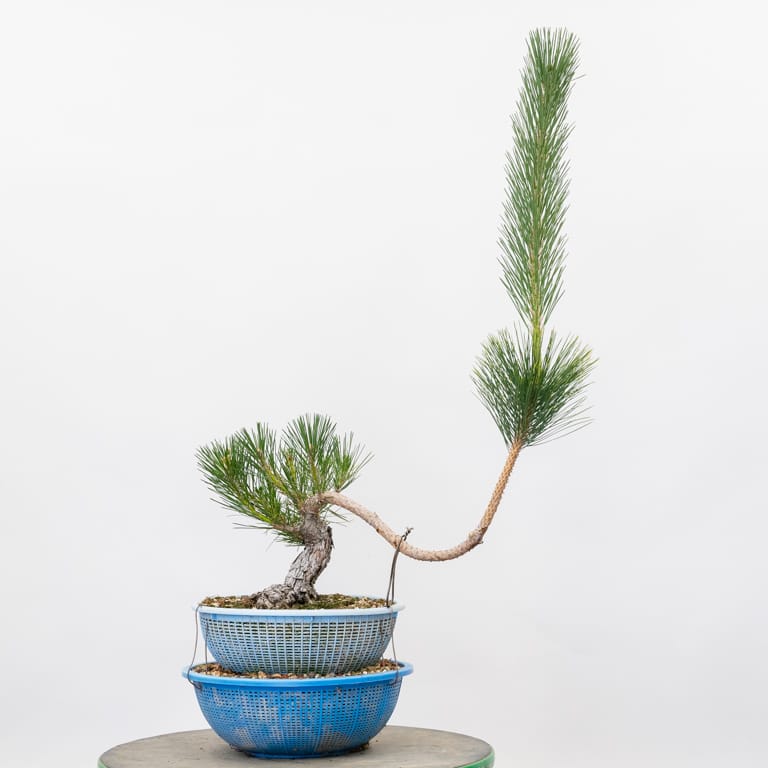
Young pine with a single sacrifice branch
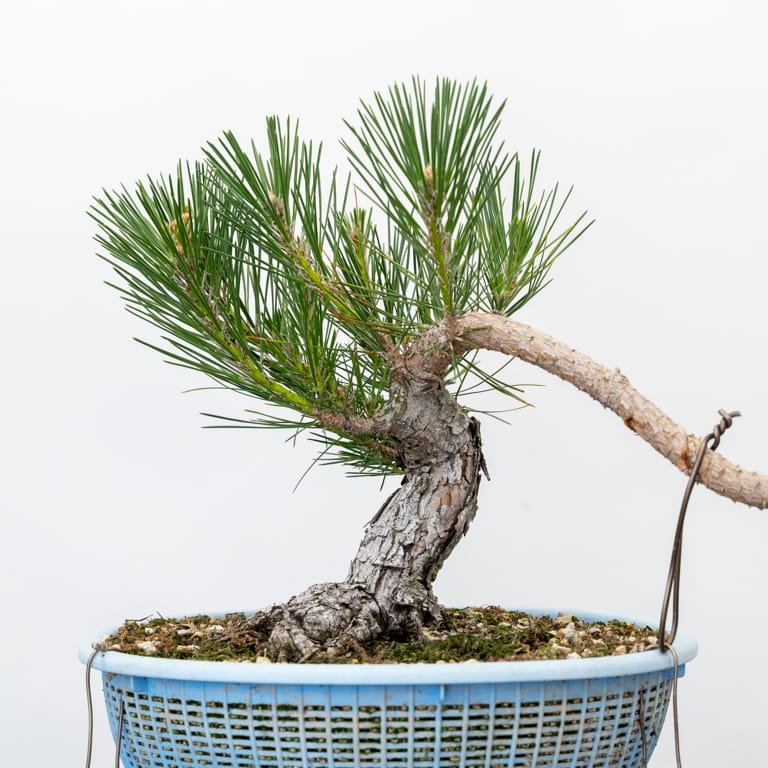
Lower branches before decandling
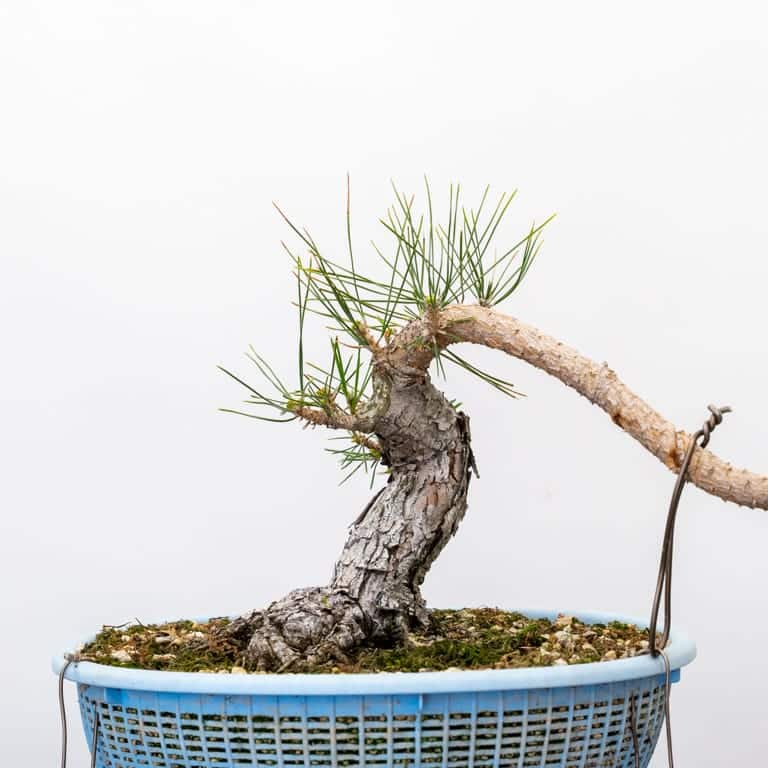
After decandling and removing excess needles
I now have a single uncut shoot on the tree and a small number of needles on the lower trunk to support the lower branches.
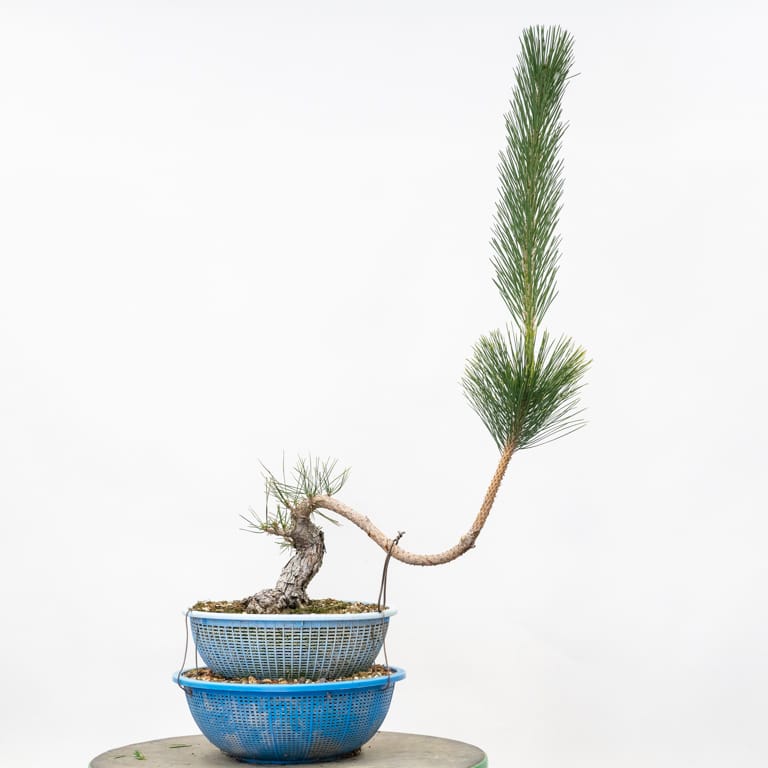
Eight year-old pine
Why grow the sacrifice branch off to the side? Simply to ensure the lower branches receive adequate sunlight.
I plan to leave this sacrifice branch for another year or two before removing it and deciding on whether or not the tree will need a third sacrifice branch.
Speaking of development techniques, you can now watch highlights from the Bonsai Society of Portland’s Farm to Table event on YouTube! Details below.
BSOP Releases Videos of Recent Farm to Table Event
For those who missed the Bonsai Society of Portland’s Farm to Table event, you can now catch key presentations online, including Tom Fincel’s Top-Down Repotting technique.
- Day 1 – Grower’s Panel: John Eads, Matt Reel, Michael Hagedorn, Andrew Robson and I address questions about working with field-grown material.
- Day 1 – Super Critique: The panelists offer concrete next steps for improving participants’ trees.
- Day 2 – Chris and Lisa Kirk Tell the Telperion Farms Story: A rare opportunity to hear the Kirks share details about how they got started making the trees for which Telperion is known.
- Day 2 – Top-Down Repotting Technique for Field-Grown Trees: Tom Fincel breaks down his approach for transitioning trees from the field to bonsai pots.
✕
Subscribe to Indian Bonsai Art
New Posts Delivered Every Tuesday and Friday
Reader Interactions
This site uses Akismet to reduce spam. Learn how your comment data is processed.
